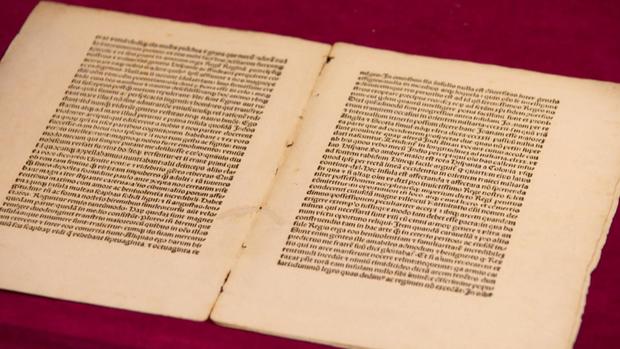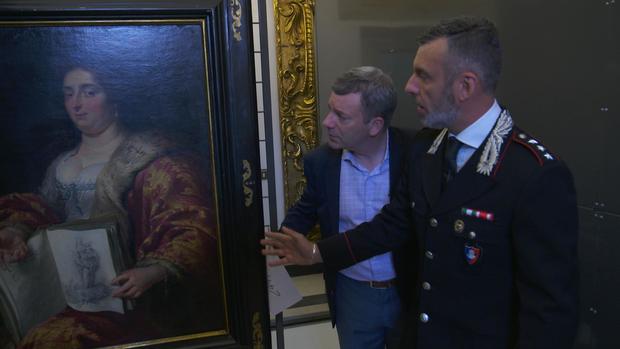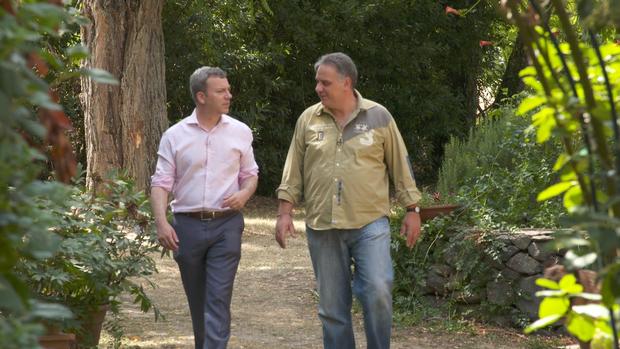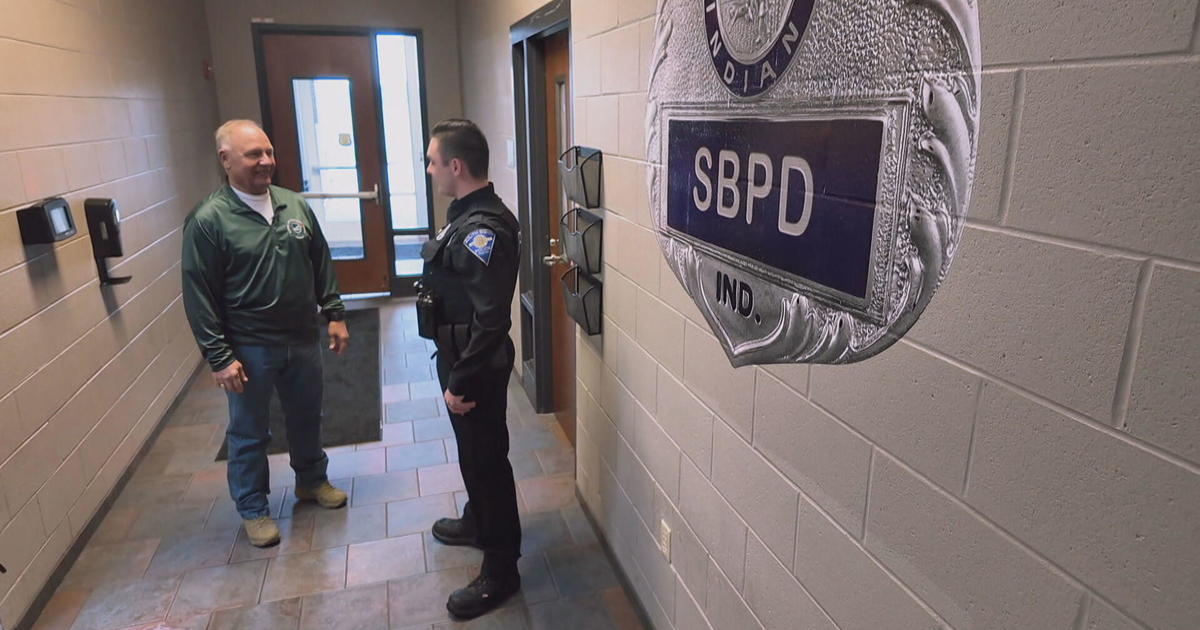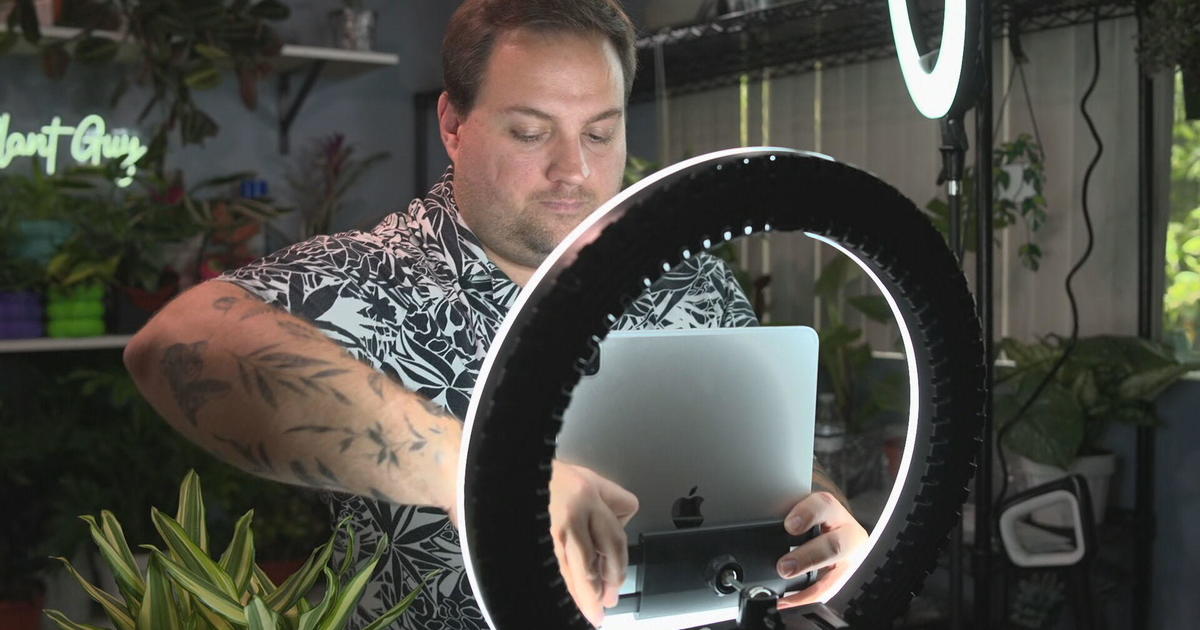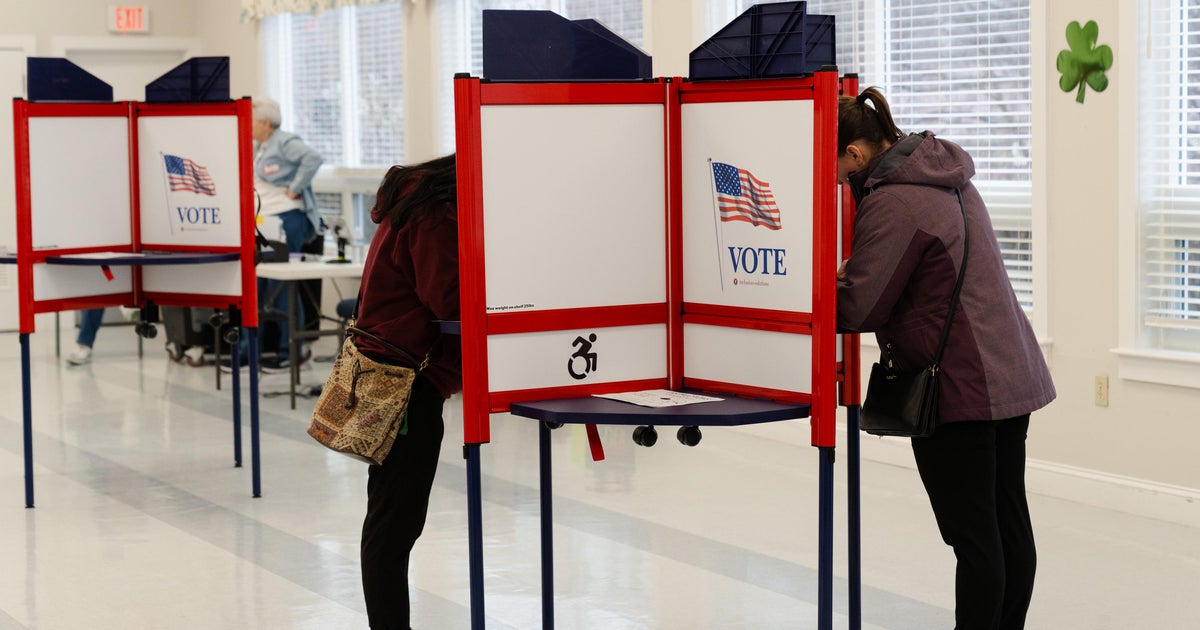Who's stealing Christopher Columbus letters from libraries around the world?
In 1492, Christopher Columbus, of course, sailed the ocean blue. And on his journey home, he wrote a letter to his patrons, King Ferdinand and Queen Isabella of Spain, describing his discovery of the new world, and in effect, asking for more money to make another trip. Columbus' voyage marked one of the great plot points in history. Upon his return, his letter was printed and distributed throughout Europe, making for blockbuster news. Columbus' original handwritten letter, penned on the high seas, no longer exists, but some of the printed copies do. Most are housed in prestigious libraries, and for centuries, that's where they've remained. That is, until about 10 years ago, when authorities discovered some of these treasures had been stolen and replaced with forgeries. So began a modern kind of trans-Atlantic quest, as investigators in the U.S. and Europe worked to recover Columbus' missing missives and solve this most unusual international mystery.
If there is one library in the world you'd think would be impervious to theft, this would be it. The Vatican library in rome houses a vast and unrivaled collection of historic treasures. It is the pope's library, home to manuscripts going back nearly 2000 years. The library is closed to the public, it's a place for scholars only. But Ambrogio Piazzoni, the vice prefect, invited us inside.
It was here in 2011 that Vatican officials first discovered that one of their prized items, a Columbus letter, had somehow been stolen and replaced with a fake.
Jon Wertheim: How do you think this happened?
Ambrogio Piazzoni (Translation): Look I do not know. I have no idea how and when it may have happened. Certainly it was an operation carried out as a proper theft. But I do not know when or how.
He is in good company. At the center of this mystery: this eight-page letter, written at sea by Christopher Columbus, more than 500 years ago. In it, he describes his first impressions of the new world. A wonderland, he writes, filled with rivers, gold and timid natives.
When Columbus' letter arrived at the royal court in Spain in 1493, it was promptly sent to Rome, where it was translated into Latin and printed, spreading the news of his extraordinary expedition.
Jon Wertheim: So this was big news? Columbus makes this voyage and suddenly, this is being disseminated?
Jay Dillon: This is some of the biggest news ever
Jay Dillon is a rare book dealer in New Jersey. He ranks the Columbus letter as one of the most important documents ever printed.
Jay Dillon: This was one of the first bestsellers. It is probably the first contemporary account of anything to be published across Europe.
Today, only about 30 copies of this Columbus letter still exist.
Jay Dillon: Each one is now worth something in the low 7 figures
Jon Wertheim: More than a million dollars?
Jay Dillon: More than a million but probably less than $4 or $5 million
It was while researching Columbus letters on his home computer, back in 2011, that Jay Dillon first noticed something amiss. The National Library of Catalonia in Barcelona had posted photos of their Columbus letter online. What struck Dillon as odd: it looked exactly like a Columbus letter that he had seen for sale a year earlier, right down to the same smudge marks in the margins.
Jon Wertheim: And you're telling yourself what at this point?
Jay Dillon: I'm telling myself that one of them has to be a forgery.
Jon Wertheim: Why is that?
Jay Dillon: Because you cant have two books with the same random brown spots in the margins. It's just impossible.
Jon Wertheim: What confirmed your suspicions were these matching marks from these texts that were 500 years old?
Jay Dillon: That's right. Exactly
Jon Wertheim: That would not happen.
Jay Dillon: That cannot happen.
Jay suspected the library's letter had been stolen and put up for sale, which meant whatever was currently in their collection was a fake.
Jay Dillon: It was so remarkable, I couldn't believe it at first. And I made it my business from that moment on to look at every original I could.
And so it was that Jay Dillon became an unlikely detective. Following his instincts, he visited libraries in Rome and Florence and took a look at their Columbus letters.
Jay Dillon: To my utter astonishment, a Columbus letter in the Vatican library was a forgery. And then I went to the Biblioteca Riccardiana in Florence and damned if the same thing doesn't happen again. Their Columbus letter is a fake too.
Afraid that notifying the libraries might alert the culprit, he decided instead to take his information to the Department of Justice.
Mark Olexa: It seemed like it was almost out of a Hollywood movie script.
Homeland Security special agent Mark Olexa led the investigation, along with assistant U.S. attorney for the District of Delaware, Jamie McCall.
Jamie McCall: Similar reaction. I thought it was a John Grisham novel. That we had some people in Europe stealing these treasures of the world and replacing them with high quality forgeries.
Jon Wertheim: You say Hollywood script, you say John Grisham. Were you skeptical?
Jamie McCall: Of course we have to confirm what our tipster was providing us
They turned to Paul Needham, one of the world's foremost experts on 15th century printing. He runs the Scheide Library at Princeton University, home to one of the most valuable private collections of books on earth.
And now it was Needham's turn to travel to Europe to examine the letters. In each case, he determined the originals had indeed been removed and replaced with photographic facsimiles printed on centuries-old paper.
Paul Needham: The Columbus letter being a highly collected book it's just the perfect combination. Both very small and very valuable their value per leaf of paper is higher than for any other printed book.
Jon Wertheim: You're saying this is the perfect item to forge.
Paul Needham: It's the perfect item to forge.
Jon Wertheim: And there's a market for it?
Paul Needham: There's always been a market for it
This turned into a trans-Atlantic collaboration. A legacy, you might say, of Christopher Columbus.
Mark Olexa: We engaged quickly with Carabinieri.
Enter Giovanni Prisco, captain of the Carabinieri Police's Cultural Heritage Squad, based in Rome. His unit investigates property theft from private homes, churches and libraries. In Italy, it is a crime market second only to that of illegal drug and weapon sales.
Jon Wertheim: We are in this country with so many artifacts, with so many churches – you must be very busy.
Giovanni Prisco: Yes we are very, very busy, of course.
One of the most valuable art collections in Europe isn't housed in a museum visited by millions of tourists, but in this warehouse in the back of his police station. It's basically an evidence locker for stolen artifacts.
Jon Wertheim: This is all art that you've seized
Giovanni Prisco: Yes, there are some archaeological items – some fake and contemporary arts, and some antiques, paintings, like--
Jon Wertheim: What is this?
Giovanni Prisco: Yes, like that one. This is a Caravaggio, it's coming from school of Caravaggio.
Jon Wertheim: Caravaggio.
Giovanni Prisco: Yes, and it is a paint stolen at the end of 1990 and was from a private house. It was discovered in the north of Italy.
Jon Wertheim:What does a Caravaggio go for these days?
Giovanni Prisco: It is millions of dollars of course.
Jon Wertheim: Millions of dollars.
Giovanni Prisco: Yes, it's a great paint, it's quite big and it's coming from Caravaggio's hands.
But wait there's more: amphoras, sculptures and dozens of masterpieces. An original Tiepolo. And this painting by Peter Paul Reubens.
Jon Wertheim: Oh wow.
Giovanni Prisco: It's a Madonna.
Jon Wertheim: This is a Rubens.
Giovanni Prisco: Yes, it's a real Rubens. It's not a fake.
Captain Prisco says one of their biggest challenges these days is protecting Italy's rare books. The country has more than 18,000 libraries.
Jon Wertheim: Why is it so difficult to protect books from theft?
Giovanni Prisco: because books, some of them are really small and it's not difficult to put under your arm or in your jacket.
While book thefts are often committed by insiders, in the case of the Columbus letters, Assistant U.S. Attorney Jamie McCall suspects there may have been more than one person involved.
Jamie McCall: It requires access. It requires the ability to create high quality forgeries. And then the ability to know where and how to sell these Columbus letters – on the private market.
Jon Wertheim: One name that keeps coming up is Massimo De Caro. Familiar name to you guys?
Jamie McCall: Yes, Massimo De Caro was prosecuted by the Italian authorities for pilfering thousands of rare books and he was involved in the sale of at least one of the Columbus letters at issue.
Jon Wertheim: This was someone who's been involved in these kind of crimes before?
Jamie McCall: Yes, correct.
Jon Wertheim: Fair to characterize him as a person of interest?
Jamie McCall: He is a subject in the investigation.
The Columbus letters themselves may be hard to track down, but this subject in the investigation is not exactly in hiding. Massimo De Caro, a notorious Italian book thief, just finished serving a seven-year sentence for stealing thousands of ancient books and manuscripts from Italian libraries and selling them overseas. To our surprise, he agreed to meet with us at his home in Orvieto, a hill town an hour's drive north of Rome. To say that he professes his innocence would be an act of considerable understatement.
Jon Wertheim: The police say you are a subject in this investigation. Does that concern you?
Massimo De Caro: You know, first of all, the police in Italy, regarding books are the worst, ok? They even don't know how is made one book. I love Italy too much to say which level they are, ok?
Jon Wertheim: But doesn't bother you that you are a person of interest?
Massimo De Caro: No, no, I mean, I would like to help but--
Jon Wertheim: You want to help?
Massimo De Caro: Yes I would like to help. If I work on it, I'm sure I can solve.
Jon Wertheim: You think you're smarter than the police.
Massimo De Caro: Let's say that I am more expert than them.
Jon Wertheim: In this field.
Massimo De Caro: In this field, yes.
De Caro is not just a convicted thief, he's also an accomplished forger. He spent years making a fake Galileo book, which fooled the experts and sold for almost a half million dollars. He showed us another Galileo reproduction he made.
Massimo De Caro: you can see the quality of the paper. I used antique paper.
Jon Wertheim: You did this? This is your handiwork.
Massimo De Caro: Yes, it all. I am very proud about this.
Jon Wertheim: You're very proud of this.
Massimo De Caro: Yes.
Jon Wertheim: If this book were original, what would this fetch on the market? What would someone pay for this?
Massimo De Caro: $300,000 at least
De Caro admits he sold two Columbus letters, which he says he bought legitimately from an anonymous collector. But he denies he ever made a fake Columbus letter. Why? For one thing, he says, it's too easy.
Jon Wertheim: You could've reproduced one of these Columbus letters.
Massimo De Caro: Oh if I try? I can, I'm sure I can create the best Columbus letter.
Massimo De Caro: If I create a Columbus letter, then we can show this Columbus letter to all the expert that you want and I'm sure I can bet that nobody recognize it is a fake.
Jon Wertheim: You think you can fool them?
Massimo De Caro: Yes.
Eight years into the joint U.S.-Italian investigation, no arrests have been made in the case, but three stolen Columbus letters have been recovered. No easy task, as they were sold in private sales to wealthy collectors, who, investigators say, weren't aware the letters had been stolen.
Jon Wertheim: How did you start tracking down the originals?
Mark Olexa: We relied heavily on Dr. Needham. He had a great roadmap of transactions and who was possessing and selling these Columbus letters throughout the world.
They were found in the most surprising places. The letter stolen from the Riccardiana Library in Florence turned up in, get this, the U.S. Library of Congress, alongside national treasures like the Declaration of Independence and the Constitution.
Jamie McCall: They were shocked. They were stunned. As you can imagine. The letter had been donated to the Library of Congress in 2004 by one of their major donors.
As for the Vatican's stolen Columbus letter, it was traced to a wealthy Atlanta collector, who had bought it in 2004 for almost $1 million. Last year, Ambrogio Piazzoni, the vice prefect of the Vatican library, was on hand when it was returned to its rightful home.
Jon Wertheim: When the Columbus letter was returned to the Vatican, was the pope informed about that?
Ambrogio Piazzoni (Translation): Yes, he was informed. He was very pleased with this return.
Jon Wertheim: When you're seeing the successful return of this stolen Vatican Library document, is that a miracle?
Ambrogio Piazzoni (Translation): I use the word miracle for other things but let's say that this was a very beautiful thing and we're happy that it happened.
For Jay Dillon, the rare book dealer who stumbled upon the first clue in this mystery, it's been a satisfying quest, about more than simply stolen letters.
Jay Dillon: This is the very stuff of history. Columbus, for all his achievements and all his faults, did something that nobody had ever done before. He actually made the globe a globe. And that's pretty much the most consequential news ever published, isn't it?
Produced by Katherine Davis. Associate producer, Jennifer Marz.
